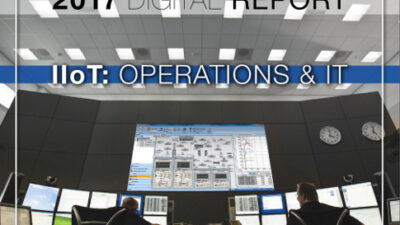As part of a major overhaul of its air traffic control support infrastructure, the U.S. Federal Aviation Administration contracted with EDSA Micro to provide a power analytics electrical power infrastructure protection system for mission-critical facilities nationwide.
San Diego, CA — In the wake of increased flight delays caused by glitches in the nation’s air traffic control (ATC) infrastructure, the Federal Aviation Administration (FAA) has embarked on a major overhaul of its computers, radar systems, networks, and support systems. As part of that overhaul, the FAA selected EDSA Micro Corp. to provide a power analytics electrical power infrastructure protection system for mission-critical facilities nationwide.
“The financial consequences of an outage somewhere in the FAA network– not to mention the disruption of business and personal travel – can be severe,” said Mark A. Ascolese, EDSA chairman and CEO. “The direct and indirect financial toll can quickly reach millions of dollars in higher fuel expenses, lost landing revenue, increased employee costs, and spoiled perishable cargo…not to mention the disruption of airline schedules, passengers’ missed business meetings, canceled vacations, and so on.” An article in the Thursday (Aug. 28) Wall Street Journal reported aviation officials, lawmakers, ATC controllers, and other critics as saying the agency needs to pay greater attention to its existing infrastructure problems. For example, the National Airspace Data Interchange Network (Nadin), shut down Tuesday, causing over 600 delays, mostly in Atlanta, Chicago and the Northeast. The WSJ report said other key pieces of FAA networks have failed, such as a new $2.4 billion telecommunications system, and two radar outages since September in the Memphis, TN, area.
The EDSA contract is part of a five-year “Indefinite Delivery/Indefinite Quantity” (IDIQ) award, under which EDSA will deploy its Paladin Live platform at major air traffic control facilities across the United States. The company expects the contract’s total value to ultimately
Initially, EDSA says, the power-protection system will be deployed in two types of critical National Air Space (NAS) facilities: Air Route Traffic Control Centers (ARTCCs) and Terminal Radar Approach Control facilities (TRACONs). While individual control towers are responsible for air traffic arriving and departing from airports, ARTCCs and TRACONs are responsible for traffic between airports in a geographical area. Each facility can service as many as 60 airports and manage over 500,000 square miles of airspace.
“Taken by themselves, FAA facilities are comparable to some of the most demanding mission-critical data centers in the world,” Ascolese said. “But when you take a data center and add air traffic displays, communications, and weather-tracking equipment, you end up with something far more complex than you’ll usually find at a server farm. We’re eager to show the FAA how dramatically we can help them improve the resilience of their facilities.”
— C.G. Masi , senior editor
Control Engineering News Desk
Register here and scroll down to select your choice of automation eNewsletters free.


